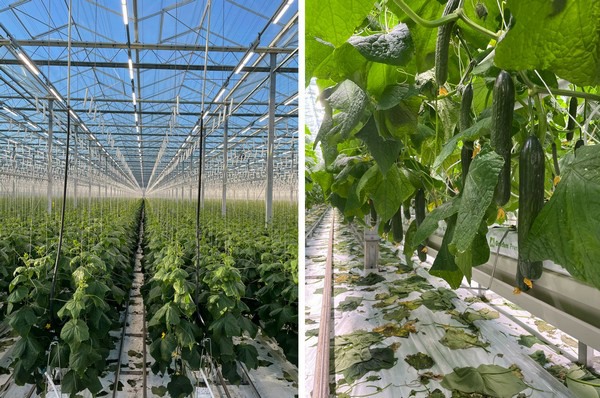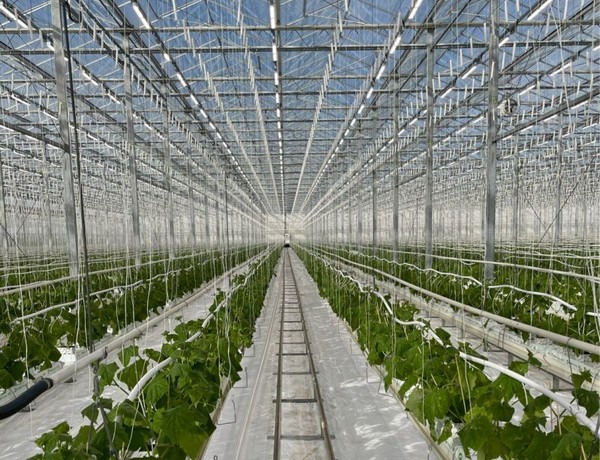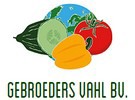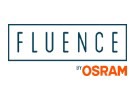Those who still expect a pink glow above the greenhouses with LED lighting will be disappointed with Gebroeders Vahl. Although the cucumbers in the greenhouse are illuminated with 100% LED, there is not a trace of pink. Kees Vahl says they chose the VYPR series from Fluence, because this light recipe delivers the quality they were looking for. "It most closely resembles natural sunlight."

No need for heat
Kees Vahl took the first cucumbers out of the greenhouse in IJsselmuiden last week and if all goes well, last winter will be the last time he had a harvest-free period at his nursery. Now that LED lamps have been installed, it will be possible to harvest all year round. He says that customers are increasingly asking for this: year-round product from one supplier. In it, the cucumber chases the tomato, as it were. “We don't have to restart sales every year. You have a basis that continues to run. ”
That is why the growers have been looking for suitable lighting for their cucumber nursery for some time. “But because we work with geothermal energy, we don't need the heat from HPS,” says Kees. “With HPS you cannot bring in enough light in the cucumbers anyway, because you quickly get too much heat. So we switched to LED. In recent years we have done several tests with colours, but did not find what we were looking for. Until we installed 2,000 m2 as a trial last year, with a separate heating compartment. This resulted in such good results that we decided to continue. Now there is 1 department under the lights, 2.1 hectares.”

Less plant stress
“In my opinion, you cannot bring in enough light with HPS, because too much heat rapidly builds up. That is difficult: it means you cannot achieve enough fruit setting to get through the dark period.” Currently they have 260 mmol hanging above the plants, from the VYPR R4 series. They opted for a PhysioSpec spectrum: a broad white spectrum, consisting of red, green and blue with a small portion of far-red light. “The light recipe has been developed in such a way that it is the most efficient for the plant. With more red light you may be able to get more mmol from the same amount of electricity, but those are not always the usable mmols for the plant,” explains Kees. "With this light recipe, the plant has less stress from the transition from the dark period to times with more sunlight."
Adjusting
The lamps can then be dimmed up to 10% and can therefore precisely supplement the receding sunlight, something that happens thanks to a PAR sensor in the greenhouse. “Normally we start planting in January and you start slowly with a limited number of fruits. Only later do you add stems. Now we also put away the full number of stems from this crop, which we also put in the summer: 3.1 per m2,” says Kees.
They will then enter winter cultivation in November. “We use the lamps to adjust the light when the sun is gone. When the sun sets, the lamps replenish it. For example, we expect to be able to achieve summer productions between November and February. You may be using a little more power with this light recipe to achieve the same mmols, but the plant reacts much more naturally than when you start working with more red. You can create summer days in the greenhouse in the middle of winter. ”
Spotless ground cover
The effect of the lighting is immediately clear: last week Kees cut the first cucumbers, only 19 days after planting. And those cucumbers come from a particularly neat greenhouse: you could eat the fresh cucumbers from the spotless ground cloth. “Virus pressure is of course a challenge anyway, especially if you are going to produce all year round. We close this department completely in the winter. Clearing takes place in September and cleaning in October. Then new plastic goes in it and then everything is closed. As long as the other gardens are not cleaned, the product goes to another processing hall - only when everything has been disinfected can we pack again in the same hall. Furthermore, we have people work individually where possible and we avoid turnover from one block to another. ”

On to 10 ha
Kees certainly sees further expansion of the area illuminated with LED happening in the future. At least, at the nursery in the Netherlands. Other things are at play at the company's German site in Brandenburg. "Electricity prices are higher there, so it is more difficult to level the pay off."
In the Netherlands, market demand and the availability of heat for cultivation also play a role. “The acreage we have now suits the buyers we have. If the demand from the market increases, we will expand further. ”
“Before we can illuminate our entire acreage (10 ha, ed.), We also have to look for a way to deal with the extra heat,” Kees continues. "Maybe we can supply it to others."
The company has been successfully using geothermal energy for nearly a decade and had hoped to be able to commission an additional well in 2019, but complicated government regulations keep the decision on this postponed and the talks continue. "We hope to start drilling this year, but we've been saying that for a while now."
For more information:
Gebroeders Vahl B.V. 
Hartogsweg 6
8271 PE IJsselmuiden
The Netherlands
Phone office: +31 38 333 84 21
http://tuinderij-vahl.nl/
Fluence 
Leo Lansbergen
l.lansbergen@osram.com
www.fluence.science

